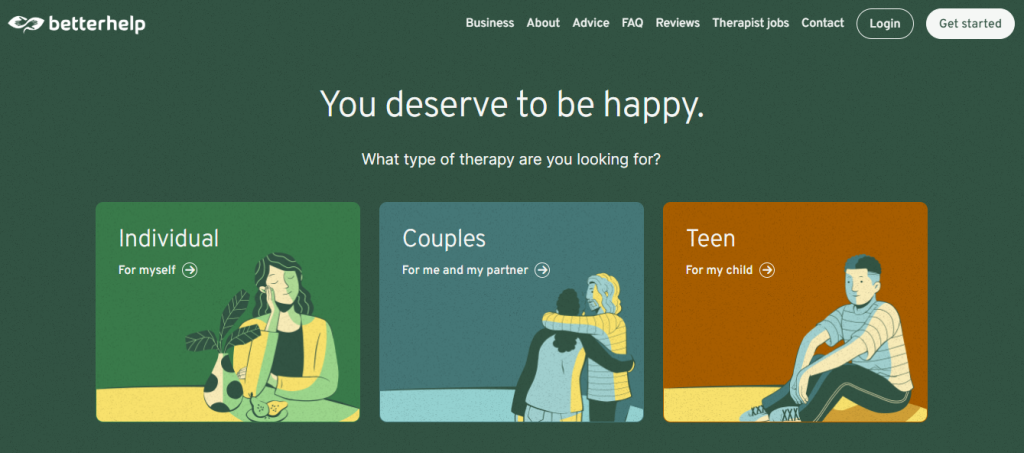Struggling with relationship value clashes? Unlock expert conflict resolution strategies for lasting harmony.
The Reality of Value Conflicts in Modern Relationships
Every couple has that moment. You’re sitting across from your partner, discussing something simple like weekend plans or career goals. Then it hits you: you both want different things. Not just different restaurants for dinner – but different paths in life.
A 2024 study by the Relationship Research Institute shows that 67% of couples face serious conflicts about core values at least once per year. These disagreements often lead to bigger problems when left unaddressed.
Think about your last significant disagreement with your partner. Was it really about the surface issue – money, time, or family decisions? Or was it about deeper values that shape how you both see the world?
Relationship counselors notice a pattern: couples often mistake value conflicts for practical disagreements. They argue about spending habits when they’re really clashing over financial security versus life experiences. They debate parenting styles when they’re actually disagreeing about fundamental beliefs about discipline and independence.
But here’s what relationship experts know: value conflicts aren’t relationship death sentences. In fact, they can strengthen your bond – if you know how to handle them correctly.
The key isn’t finding someone who shares all your values. It’s learning to respect, understand, and work through differences. This requires specific skills that most of us never learned.
This guide will:
- Break down expert strategies for handling value conflicts.
- You’ll learn practical steps to turn potential relationship breakers into opportunities for deeper connection.
- We’ll examine real techniques that work, based on research and clinical experience from leading relationship experts.
Let’s start with understanding what’s really happening when values clash.
Step 1: Understanding Core Values in Relationships
- Your relationship depends on knowing shared values.
- Open communication about values keeps couples healthy.
- Differing values aren’t dealbreakers with the right approach.
Identifying Your Partner’s Core Values
Crucial to relationship success is identifying your partner’s values. Talk openly about your life priorities. Topics like family, work goals, financial goals, and personal growth offer insight. Try asking open-ended questions like, “What does success look like to you?” or “How important is family time to you?” This helps you see not only the values themselves but how they might shape decisions.
🪄 Studies in the Journal of Marriage and Family link shared financial goals with marital satisfaction.
Not all values hold the same weight. Determine which ones are negotiable and non-negotiable. Negotiable values might be hobbies or short-term goals. Non-negotiable values often relate to deep personal beliefs and long-term goals. Things like religious beliefs or career aspirations might fall here.
Consider reading “The Seven Principles for Making Marriage Work” by John Gottman for a deeper understanding of balancing these aspects in relationships.

He suggests that while some marital arguments might not be resolved, understanding these core differences can lead to harmony.
Learning about your partner’s core values can help you both acknowledge potential areas of conflict early. This proactive approach is vital. It prepares you for open discussions and can prevent misunderstandings in future decisions.
Exploring Your Own Value System
Understanding your own value set is just as important. Reflect on personal experiences and beliefs that have shaped you. Ask yourself questions like, “What are my dealbreakers?” and “What beliefs drive my daily behavior?” Journaling can be a useful tool to map out these thoughts.
Consider the evolution of your values over time. Values that were critical in your early twenties might not hold the same weight now.
Compile a list of values that consistently guide you. This list can serve as a touchstone during relationship discussions. For deeper exploration, “Awaken the Giant Within” by Tony Robbins discusses self-discovery and personal growth. Knowing your core values will allow you to approach conversations with clarity and confidence.
Communicating Shared and Differing Values
Communication is key when exploring values in a relationship. Regular check-ins with your partner about values can prevent future disagreements. Create a safe environment that encourages honest discussions. It’s important that these discussions are not accusations but explorations.
Openly addressing differing values can strengthen your relationship. It’s essential to approach these conversations with respect and acceptance. Techniques like “Nonviolent Communication” by Marshall Rosenberg can help you express concerns without blame.
Ask questions and actively listen to your partner. Don’t shy away from deep, challenging conversations. They are a chance to learn and grow together. Through this process, you can build a foundation of empathy and understanding.
🪄 In addition to identifying values, consider aligning on financial decisions, which often reflect core beliefs and impact long-term relationship stability.
Step 2: Conflict Resolution Strategies for Couples

- Plan talks and focus on shared goals.
- Listen to understand, not to reply.
- Find common ground and compromise.
Creating a Joint Conflict Resolution Plan
Agreeing on the time and method for a discussion builds a roadmap for effective talks. Always aim for calm periods, ensuring neither partner is stressed. Morning talks might work for some; others may prefer evenings. It’s key for couples to jointly pick a time that gives them space to fully engage.
Shared goals help anchor couples during turbulent discussions. When disagreements happen, acknowledge the goals both partners want to reach. These can be financial goals, family plans, or personal pursuits. Knowing you both aim for the same end often eases the path forward.
Setting up the Environment
Arrange the space to make it inviting. Comfort fosters open dialogue. Soft lighting and reduced noise can ease tension. Decide on tech-free zones, like the living room, to minimize distractions and focus on each other. Then, choose a method. Some couples prefer face-to-face talks, while others find that sitting side-by-side helps create a non-confrontational space.
Practicing Active Listening During Conflicts
Active listening, a skill often overlooked, is crucial in conflicts. When a partner speaks, try paraphrasing what they’ve said to them. This shows you’re paying attention and want to grasp their point. It might sound like this: “So, you’re saying you felt overlooked when I didn’t consult you about the purchase?” Such reflection validates feelings and builds understanding.
🪄 Active listening in conflict resolution can reduce misunderstandings by up to 40%.
Interrupting short-circuits dialogue. Allow your partner to express their thoughts fully before responding. This patience can be challenging but holding back tempers and ensures you grasp the whole situation. It’s more about hearing than speaking, a vital shift in mindset.
Techniques to Enhance Listening
Use non-verbal cues for active listening. Nodding shows awareness and agreement. Maintaining eye contact signals engagement. These simple actions communicate effort and priority. You might also ask open-ended questions to spur deeper insights. As an example, “How did that make you feel when it happened?” encourages your partner to open up further.
Seeking Compromise and Middle Ground
Finding a middle path often requires creativity and patience. The goal is a win-win outcome. Think of solutions like a great recipe: a mix that caters to both tastes. Begin by clearly outlining what each wants and needs, but remain flexible in the means of getting there.
Regularly evaluating compromises is crucial. Just because a solution worked once doesn’t mean it will continually do so. Implement a routine check-in, perhaps monthly. Discussing what worked or didn’t ensures adjustments can be made. This proactive approach prevents future conflicts from escalating due to unresolved past issues.
Building a Bridge
In compromise, focus on overlapping interests. Highlight areas of agreement first to soften the discussion. Then address differences with a problem-solving mindset. End meetings with a clear list of agreed actions. Write these outcomes down for future reference; clarity fuels progress and mutual satisfaction. One expert noted,
“Great couples still get angry with each other, but they continue to discuss until there is a solution even if it takes several days.”
This patient persistence often lies at the heart of strong relationships. Keep conversations iterative until both sides feel heard and valued.
Step 3: Communication Techniques for Value Alignment

- Ease tension by expressing your thoughts calmly using “I” statements.
- Clearly discuss values to avoid judgment.
- Talk about and redefine boundaries regularly.
Using “I” Statements to Express Values
“I” statements help express your thoughts without pointing fingers. This reduces defensiveness. Instead of saying, “You never care about my needs,” you might say, “I feel unheard when my needs are overlooked.” The goal is to articulate your perspective clearly. This invites your partner to share their view. It creates a safe space for both people to express their values.
Encouraging your partner to use “I” statements too helps maintain balance in conversation. When both partners engage in this manner, discussions become less about blame and more about understanding. You could say, “I appreciate it when you share your thoughts like that. It helps me understand where you’re coming from.”
🪄 Research shows that using ‘I’ statements can reduce conflict by 50% in value-based discussions, according to a study by the Journal of Communication.
Clarifying Value Conflicts Without Judgment
Understanding that emotions and values are distinct is vital. When a conflict arises, focus on separating how you feel from the actual discussion of values. This reduces heated exchanges and centers the conversation on practical issues. If a long-term travel plan clashes with financial values, keep the discussion about logistical concerns rather than feelings of being ignored.
Validating your partner’s feelings is also crucial. Acknowledge their emotions even if you disagree with their perspective. A simple, “I hear that this is important to you, and your feelings are valid,” can make a world of difference. It fosters a respectful ambiance, allowing you both to lay values on the table without the cloud of judgment. This validation needs to be mutual to be effective.
Balancing Emotions and Values
To achieve value discussions without judgment, balance is key. Acknowledge emotions without letting them control the direction of dialogue. Establish ground rules for pauses when emotions flare. These breaks can de-escalate tension and allow clearer exchanges.
Setting Boundaries While Aligning on Values
Boundaries are personal limits that promote respect and clarity. Begin by discussing what you and your partner find acceptable or non-negotiable. One partner might need alone time; another might value constant interaction. By voicing these needs openly, you both ensure expectations are understood and respected.
Boundaries aren’t static. Relationships grow and so do the people in them. Reassess boundaries regularly and talk about them. Revisit your discussions every quarter to see if any changes need to happen. This keeps the lines of communication open and ensures both partners feel heard at different stages of the relationship.
Reinforcing and Adapting Boundaries
Consistency is key in boundary discussions. Regular conversation reinforces understanding and ensures alignment. If one partner’s job changes, discuss how that impacts time together or shared responsibilities. Adapt as needed to maintain balance in your value alignment.
Building Empathy and Respect in Partnerships

- Empathetic listening builds deeper connections.
- Mutual respect strengthens understanding.
- Growth in values fuels relationship evolution.
Practicing Empathetic Listening
Empathetic listening is essential for building strong relationships. It lets partners feel heard and understood. Begin by reflecting your partner’s mood and words. This means showing you grasp their emotions and intentions. It’s not about agreeing, but understanding.
Acknowledge their emotions without offering solutions immediately. This validation helps in building trust and reducing conflicts. Studies show active listening and empathy greatly enhance relationship quality. Michigan State University Extension highlights that empathetic listening can ease tensions in both personal and professional settings. Practice active listening by paying full attention and not interrupting.
Techniques for Empathetic Listening
- Eye contact shows you’re focused and engaged.
- Nod or use short verbal affirmations like “I see” to show understanding.
- Avoid jumping in with advice, instead ask clarifying questions.
- Repeat back what you’ve heard to ensure accuracy and foster deeper dialogue.
Establishing Mutual Respect for Differing Values
Respecting differences in values is crucial. Every relationship comprises different values and perspectives. Celebrate this diversity. Encourage open discussions about conflicting values to foster mutual respect. When your partner makes decisions, respect their autonomy. Acceptance doesn’t mean complete agreement. It’s about valuing their perspective.
Mutual respect improves relationship satisfaction and inclusivity. According to ASCO Publications, accepting differences respectfully promotes better communication and collaboration. Engage in conversations that honor individuality while discovering shared aspirations. This approach strengthens problem-solving skills and enhances relationship dynamics.
Strategies to Foster Mutual Respect
- Accept differences as a natural part of every partnership.
- Address disagreements calmly and respectfully, focusing on understanding.
- Appreciate your partner’s strengths and individual growth.
- Regularly discuss and acknowledge each other’s achievements.
Encouraging Growth and Adaptation of Values
Values can change over time. Being open to this evolution is important. Partners should set growth goals both as individuals and as a couple. Discuss the changes in personal values and align goals accordingly. This process requires ongoing communication and flexibility.
Partners who adapt and grow together are more resilient.
Dedicate time to revisit and reassess your relationship’s guiding principles. Engage in activities that expand perspectives and foster individual growth. This encourages a dynamic relationship, capable of overcoming challenges and thriving over time.
Steps to Encourage Growth
- Schedule regular check-ins to discuss evolving values.
- Encourage each other to pursue new interests or hobbies.
- Set shared goals that reflect both partners’ current values.
- Celebrate personal and shared milestones to boost morale and commitment to growth.
Building empathy and respect in partnerships is an ongoing process. Empathetic listening and mutual respect form a strong foundation. Encouraging value growth keeps the relationship dynamic.
🪄 Studies in psychological science journals show that there’s a strong link between empathetic listening and reduced cortisol levels, showcasing the physical health benefits.
4 Tips for Couples’ Value Disputes: What Experts Know That You Don’t
We asked four thought leaders the question: “How can you navigate differences in opinions or values with your partner? Can you share an example of a time you successfully navigated a disagreement?”
Here is what they had to say:
- Look Forward to Resolving Differences
- Handle Disagreements with Empathy
- Divide Funds Based on Priorities
- Pilot Solutions for Business Disagreements
Look Forward to Resolving Differences
Most of us dread it. When differences come up in our marriage. The first step to resolving differences in a healthy way is to look forward to them. Stop viewing it as a potential for destructive conflict and start viewing it as an opportunity to create something new together.
In order to let go of the fear of conflict, we need to let go of our hopes/expectations/investments in a particular outcome. There’s humility in this act. It’s the humility of realizing that we don’t have all the answers, and trusting that we chose this partner because they may have some answers we don’t. When both parties approach difference with this attitude, magic happens.
With all transparency, this is easier said than done, it’s more of a practice than a reality. The practice shows up as noticing when the need to be right or the fear of being wrong rears its ugly head and acknowledging it. Not repressing it, not trying to kill it, not validating it, but just noticing that it’s present. The next step is to remain open to the possibility that your partner may have a view on this that’s helpful and different. After all, that’s why you entered into a partnership with them, they have strengths that you don’t and vice versa. For example, my wife and I are having an ongoing discussion about the future of our home.
We are empty nesters who have not yet let go of our larger home. I want to sell the bigger house, get a smaller landing pad, and use a vacation home as the central place where our children, their children, and ourselves get together. My wife, on the other hand, is concerned about the impact of that choice. Right now, we still have children who view the larger home as a launch pad even though they are self-supporting. This is an ongoing dialogue, and as our life situation changes, we revisit it and are making preparations for this transition.
The transition will not be made until we’re both on board, however. The reason for this is we are both right. I am right in the long-term vision, she is right in her ecological concerns for the current family situation. When the transition is complete, it will be a rich and joyful one because we both contributed to it.

Rich Heller, Mediator, Relationship Expert, Rich in Relationship
Handle Disagreements with Empathy
Differences in opinions or values with a partner are natural and can actually strengthen the relationship when handled constructively. The key is to approach disagreements with empathy, respect, and a shared commitment to understanding each other’s perspectives.
Example of Navigating a Disagreement:
My partner and I once had differing opinions about how to spend a long holiday. I wanted an adventurous trip, while they preferred a relaxing staycation. Initially, the conversation became a bit tense, as we both felt strongly about our preferences.
Here’s how we successfully navigated it:
Pause and Reflect: We agreed to take a step back and think about why we each felt strongly about our choice. This helped us move away from reacting emotionally to understanding our own needs.
Communicate with Openness: We had an honest conversation where we shared not just what we wanted, but why. I realized my desire for adventure stemmed from needing a change of pace, while my partner craved rest due to a busy work schedule.
Seek a Win-Win Solution: We decided to split the holiday-spending the first half exploring a nearby destination and the second half relaxing at home. This compromise honored both our preferences and left us feeling understood.
Why It Worked:
Respecting each other’s needs, listening without interrupting, and focusing on collaboration rather than “winning” turned the disagreement into an opportunity to strengthen our connection.
Advice:
“Prioritize understanding over agreement.” It’s not always about aligning values or opinions, but about valuing your partner’s perspective and finding common ground.

Prabhu Raghavan, Advertising & Marketing Consultant, EDS FZE
Divide Funds Based on Priorities
Empathy, attentive listening, and a readiness to make concessions are necessary while navigating disagreements with a spouse. I once had a disagreement with my spouse about how to divide up funds, namely whether to put more money into an emergency fund or a vacation. We gently talked about our differing viewpoints, with my spouse prioritizing experiences and me valuing future stability. In order to ensure mutual pleasure, we agreed to divide the portion between us based on our respective priorities. Relationship trust is increased and understanding is reinforced when arguments are approached honestly and with a problem-solving mentality.

Khurram Mir, Founder and Chief Marketing Officer, Kualitatem Inc
Pilot Solutions for Business Disagreements
Navigating differences with empathy and collaboration
Navigating differences in opinions or values with a partner requires open communication, mutual respect, and a willingness to find common ground.
Though I’m not in a personal partnership, running a legal process outsourcing company has given me plenty of experience navigating disagreements with business collaborators.
I remember a critical instance where I and a key team member disagreed on whether to invest in new AI software. While they were concerned about the upfront costs, I believed it would streamline our operations.
Instead of dismissing their concerns, I took the time to listen and understand their perspective. We decided to analyze the software’s cost-benefit ratio together, and ultimately, we found a middle ground by piloting the software on a smaller scale before a full rollout.
This experience taught me that the key isn’t always winning an argument but creating solutions where both sides feel heard and valued.

Aseem Jha, Founder, Legal Consulting Pro
Advanced Tips for Conflict Resolution Strategies

- Discover advanced communication methods for resolving conflicts.
- Recognize and sidestep common relationship pitfalls.
- Prevent value conflicts through proactive engagement.
Additional Communication Techniques
Nonverbal Communication
Nonverbal communication is a powerful tool. It goes beyond words. Most of what we convey is through gestures, facial expressions, and posture. Research shows that 93% of communication effectiveness stems from these cues vorecol.com.
Pay attention to shifts in tone and body language, as they can reveal more than spoken words during conflicts. Training yourself to recognize these signals can lead to substantial improvements in conflict resolution.
Organizations like Kaiser Permanente have shown enhanced employee engagement after training leaders to interpret nonverbal signals. This highlights how understanding these cues can transform not only professional but also personal dynamics.
Learning more about nonverbal cues can broaden your ability to convey empathy and understanding, situating your relationship in a better place to handle tough discussions.
Technology-Free Zones
In our fast-paced digital world, setting aside time without tech distractions is crucial. When couples establish technology-free zones, they create spaces for authentic conversations without interruptions. This approach encourages partners to engage deeply and attentively with one another.
Implementing these zones supports focused dialogue. It eliminates the potential for miscommunication often exacerbated by multitasking. Designate specific areas or times at home as technology-free to prioritize connection and communication. This practice fosters an environment where issues are tackled sincerely.
Books like “Alone Together: Why We Expect More from Technology and Less from Each Other” by Sherry Turkle dive into the impact of technology on relationships.

Consider exploring such resources to deepen understanding of intentional disconnected time.
Common Pitfalls and How to Avoid Them
Avoiding Assumptions
Assumptions breed misunderstandings. A major pitfall in resolving conflicts is assuming your partner’s motives. When assumptions guide actions, this can lead to defensiveness and further conflict. It’s essential to ask questions and seek clarity rather than jump to conclusions.
Seasoned relationship experts warn against the dangers of assumptions. They suggest partners articulate their perceptions clearly. Relationship expert, John Gottman, stresses transparency in expression. He encourages checking in with your partner regularly to affirm intentions and avoid missteps.
Addressing Conflicts Promptly
Procrastinating on conflict resolution can escalate issues. Addressing disagreements as they surface prevents them from becoming more entrenched or complicated. Timely engagement allows for immediate rectification and diminishes the buildup of resentment. Consider the quote,
“The quality of our lives depends not on whether or not we have conflicts, but on how we respond to them.”
This advice encapsulates the necessity for reactive and mindful conflict engagement. Failure to address conflicts immediately may leave unresolved tensions that could spark further disputes.
Future-proof your strategies by having open-ended conversations about existing disagreements, which can significantly improve your conflict management skills.
🪄 Studies by the Harvard Negotiation Project, which detail how open-ended questions and reflective thinking significantly enhance resolution outcomes.
Continuously learning and adapting these approaches will ensure more effective resolutions. Books and workshops on negotiation techniques can serve as invaluable resources as you delve deeper into these complexities.
Troubleshooting Common Issues

- Learn how to defuse emotional gridlock with simple steps.
- Tackle repeated conflicts by addressing underlying themes.
- Improve communication with a constructive feedback loop.
Solutions to Emotional Gridlock
Emotional gridlock can leave couples feeling stuck, unable to move past recurring issues. Here are actionable strategies to break free from that cycle.
Designate Timeouts During Heightened Emotions
- Recognize the Build-up: Pay close attention to signals indicating escalating emotions, like increased heart rate or tension. These are cues to pause the conversation.
- Set Clear Signals: Agree on gestures or words for timeouts before heated arguments occur. This agreement helps prevent misunderstandings during stressful moments.
- Define Timeout Rules: Agree on a predetermined duration for timeouts, such as 15-30 minutes. During this time, both partners should engage in calming activities like deep breathing or taking a walk.
- Separate and Reflect: Use this break to calm down individually. Reflect on your emotions privately without interacting with your partner during the timeout.
- Resume with Intention: After the timeout, return to the discussion with a calm mindset. Begin with statements about your feelings and intentions to foster understanding.
Having clear, upfront strategies for taking breaks can defuse tensions effectively and prevent escalation.
Use Relationship Counseling if Emotional Gridlock is Persistent
- Identify Patterns: Notice recurring arguments that lead to gridlock. Persistent emotional conflicts might indicate deeper issues related to core identity or differences in values.
- Seek Professional Help: A skilled therapist can guide discussions, aiming to resolve underlying conflicts. Couples therapy has a 70% success rate, with 90% reporting improved emotional well-being.
- Commit to Sessions: Regular sessions can lead to breakthroughs, with most couples finding resolution within 12 sessions. Ensuring continuity and commitment is key to therapy success.
- Engage Actively: During therapy, both partners should participate actively. Share thoughts openly, and listen to each other’s perspectives. This engagement promotes emotional healing.
- Evaluate Progress: Over time, assess improvements in communication and emotional well-being. This evaluation helps continue beneficial practices learned through therapy.
Professional guidance is often necessary for deep-seated emotional blockages, making therapy a valuable resource for many couples.
Handling Repeated Conflicts
Repeated conflicts drain a relationship when essential issues remain unresolved. Here are steps to tackle patterns that lead to these recurring disputes.
Reflect on Unresolved Recurring Themes
- Identify Conflict Patterns: Recognize issues that consistently cause conflict. These could be linked to unfulfilled needs or values that clash.
- Analyze the Cause: Look deeper into why certain issues repeat. This understanding includes evaluating unmet needs, unrealistic expectations, or conflicting goals.
- Discuss Unresolved Issues: Have open conversations focusing on identifying and resolving core problems. Use language that does not blame the other person.
- Document Findings: Write down observations from these discussions to identify patterns and areas requiring attention. Documentation can bring clarity and direction.
- Commit to Change: Agree on actions that address core issues. This commitment can transform emotional responses and improve conflict resolution.
Understanding why problems recur is key to stopping the cycle. Addressing root causes helps develop strategies for long-lasting solutions.
Implement a Constructive Feedback Loop for Future Discussions
- Establish Regular Check-ins: Schedule regular meetings to talk about relationship dynamics. These discussions should be non-confrontational and focus on improvements.
- Create a Safe Feedback Environment: Encourage open and honest feedback. Make it a norm to express views without fear of criticism or backlash.
- Use Positive Reinforcement: Highlight improvements to motivate continued progress. Positive feedback reinforces constructive behavior in future conflicts.
- Develop Solutions Together: Collaborate on problem-solving strategies. Developing shared action plans fosters ownership and accountability.
- Track Progress: Keep a joint record of feedback and solutions. Regular tracking helps monitor change and refine approaches if needed.
Structuring feedback creates a proactive rather than reactive approach to relationship concerns. These discussions can prevent recurrent conflicts by promoting continuous improvement.
Further Resources and Reading

- Building strong relationships requires understanding shared values.
- Counseling offers tailored tools for relationship growth.
- Long-term stability stems from shared foundational values.
Books and Articles on Values in Relationships
Books offer timeless insights into relational values. “The Relationship Alphabet” by Zach Brittle explores shared meaning, making it a go-to for understanding those deep connections. Brittle points out the highs and lows of relationships as essential in creating mutual understanding.
“Attached: The New Science of Adult Attachment” by Amir Levine and Rachel Heller, blends psychology with relationship advice. It teaches how attachment styles affect love and might bridge some communication gaps.

Over time, this understanding could transform how partners interact, especially when cultural or personal backgrounds clash.
Dive Deeper:
- “The Relationship Alphabet” by Zach Brittle
- “The Seven Principles for Making Marriage Work” by John Gottman
- “Attached: The New Science of Adult Attachment and How It Can Help You Find—and Keep—Love” by Amir Levine and Rachel Heller
Relationship Counseling and Workshops
Quality time spent in workshops can redefine relationships. The Gottman Institute provides couples with the tools needed to overcome conflict and nurture positive change. Online options like BetterHelp offer a comfortable environment where couples can resolve issues from their homes. Counseling not only offers a safe space but equips you with communication techniques to weather tough times.

Workshops focus on tangible skills. These skills involve everything from understanding non-verbal cues to expressing needs without tension. The Love of Attraction highlights how such skills can transform interactions, leading to more satisfaction in the relationship. Plus, the blend of expertise and community in these sessions fosters a shared understanding.
Dive Deeper:
- The Gottman Institute workshops and counseling sessions
- BetterHelp online relationship therapy
- The Love of Attraction workshops
Why Focusing on Values Matters
Shared values are the foundation of resilient relationships. Break the Cycle stresses that these values act like glue, bolstering couples through challenges. When partners align on big-ticket items like family, finances, or lifestyle, there’s often less room for insecurity.
Yet, the journey isn’t without hurdles. Diverse backgrounds might lead to value clashes, but these differences aren’t inherently negative. Instead, they offer opportunities to grow and adapt. Understanding and adapting these values can protect relationships from future tensions. John Gottman’s insights show that recognizing and respecting these differences enriches a partnership.
Building a strong relational foundation takes effort and focus on shared values. For couples determined to strengthen their bonds, diving into these resources is a worthy investment in their joint future.
Conclusion
Value differences between partners are natural, but they don’t need to create permanent barriers. The key is to understand that both partners can hold different values while still building a strong relationship. Through clear communication, active listening, and mutual respect, couples can bridge their value gaps.
Success in handling value disputes comes from daily practice. Start with small steps: schedule regular check-ins, practice active listening, and create safe spaces for honest discussions. When conflicts arise, focus on understanding rather than winning. Remember that it’s okay to hold different values – what matters is how you communicate about them.
If you’re struggling with recurring value conflicts, consider professional help. Relationship counselors provide neutral ground and proven techniques for working through deep-seated value differences. They can help you develop practical strategies tailored to your specific situation.
The goal isn’t to change your partner’s values but to create understanding and respect. When both partners feel heard and validated, they can work together to find solutions that honor both their value systems. This approach leads to stronger, more resilient relationships where differences become opportunities for growth rather than sources of conflict.
Deep Insights. Stronger Connections.
Struggling with intimacy in your relationship? Our personalized 5-Step Intimacy-Building Action Plan will help you connect on a deeper level without any uncomfortable conversations. Enter your email below and get it instantly.
Get your free, personalized 5-step intimacy-building action plan today and start transforming your relationship within 7 days!

Leave a Reply